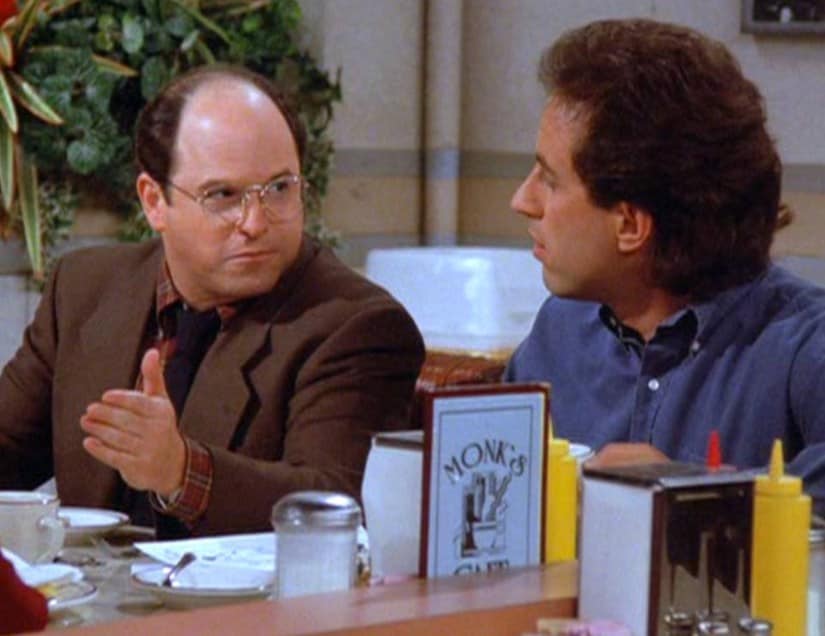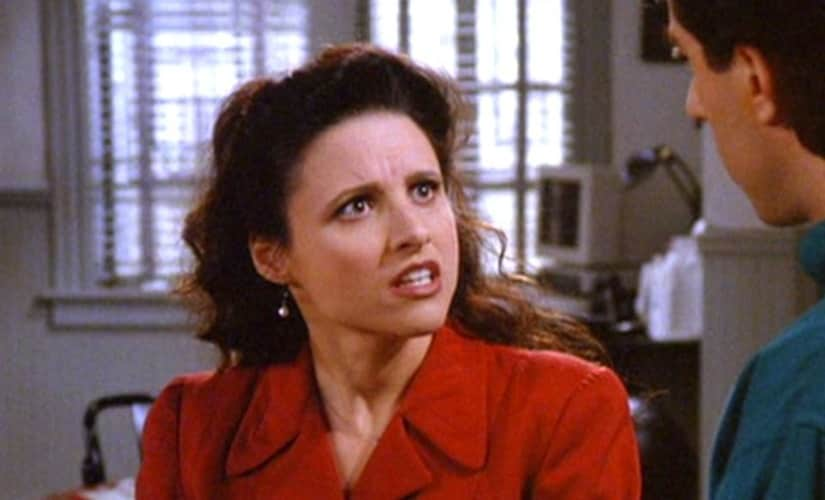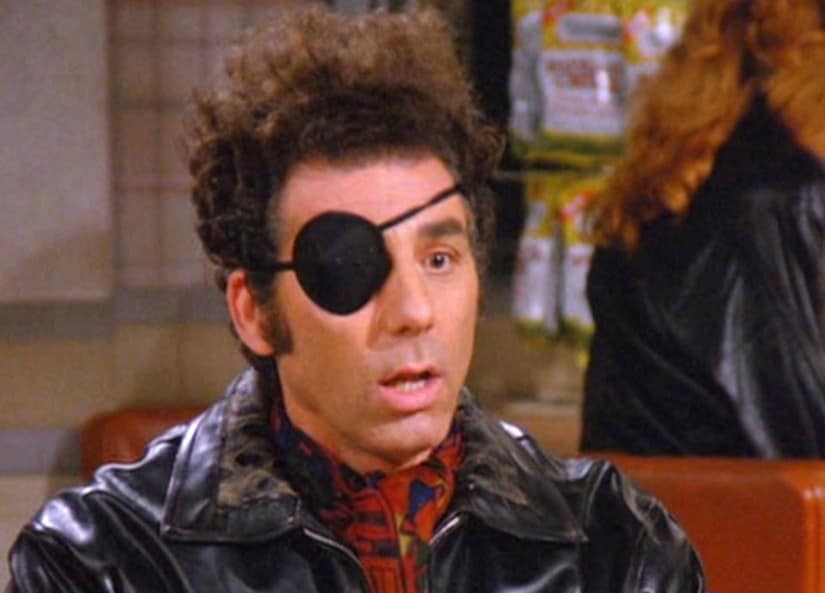On 5 July, 1989, 30 years ago, NBC aired the pilot of a TV show where a balding, stocky man and his handsome comedian friend discussed women and detergent. Nine years later, Seinfeld ended as an iconic, never-done-before sitcom that changed television, not just in America but around the world. In November of 1988, comedians Jerry Seinfeld and Larry David walked into a Korean deli to discuss the possibility of a show that the two could work on together for NBC. Three months later, they wrote a pilot that was at least in essence, about ‘two guys talking’. Back at the deli, where the two had bounced ideas off of each other, David had suggested ‘this is the show’. In the third episode of Seinfeld’s fourth season, George tells Jerry the same thing at Monk’s (the café they frequented). “I think you might be onto something,” Jerry says, perhaps ironically. They were onto something indeed, Jerry and Larry, Jerry and George. Seinfeld went on to become one of the most watched television shows around the world, a mass cultural piece that operated within the realm of everyday things, the minutiae of life. Crucially, however, without the sprinkle of romance, love and happy endings. Often described as a ‘show about nothing’, Seinfeld was a show about a lot of the little things. Absurd, wacky, inane, crude, mean at times, even abhorrent, Seinfeld put together not just actors or heroes, but anti-heroes. Perhaps the only time in history that a sitcom, intended at eliciting laughs, thought of all its characters as morally irredeemable. Naturally, the story behind the making of something so preposterous must be as beguiling. Jennifer Keishin Armstrong’s narrative biography of the show, Seinfeldia (Simon & Schuster, 2016), offers key insights into the making of the series, a journey as whimsical as it at one point seemed to both Jerry and David, impossible. [caption id=“attachment_6936731” align=“alignnone” width=“825”]  Jason Alexander and Jerry Seinfeld in Seinfeld. All images from Facebook/seinfeld[/caption] One of the key revelations of Armstrong’s book is the gargantuan role Larry David played in making the series what it eventually became. “Of course Jerry’s personality is there, especially in his character, but it likely wouldn’t be a show without Larry. He really had the vision for making it into a show to begin with, and he shaped it into what it eventually became. The network approached Jerry for show ideas, but the crucial move was when Jerry asked Larry for advice about it. That’s when the partnership began and the show started to take shape. I also feel like they balanced each other nicely; Jerry brought that lighter, goofier side, and Larry brought the edge and the darkness,” she says. David modelled a lot of characters on people he had met. Kramer was based on a neighbour David had lived across from, while George, David believed, was a close reflection of him — an ‘asshole’ and a ‘loser’. However, it was really with Elaine’s character (Julia Louis-Dreyfus) — the only woman (main character) on the series — that Seinfeld broke barriers. Cruel, selfish, manipulative, indifferent and brash, Elaine was unlike anything television had seen until then. Snarky characters like Dreyfus’ own Selina Meyer (Veep) and Phoebe Waller-Bridge’s protagonist in the lauded Fleabag are perhaps inheritors of the brunette’s toxic charm. “The mostly male writing staff were kind-of forced to give her storylines inspired by things that had happened to them, so she wasn’t written as “the girl”— she was written as a well-rounded person, and definitely “one of the guys”. Larry told the writers not to worry about giving her girly storylines, and the result was that she was different from any female character who came before her,” Armstrong says. Elaine, Armstrong agrees, was the only character on the show who had a partial epiphany and exhibited growth, even if it was through existential crises like asking herself ‘what am I even doing’. She did, Armstrong believes, in a Sartre-esque way spend the last couple of seasons ruing what she was doing with her life, about where she was stuck. [caption id=“attachment_6936741” align=“alignnone” width=“825”]  Julia Louis-Dreyfus as Elaine Benes[/caption] In one episode, Elaine poses as a girlfriend for a gay man, in another she hoards a birth control sponge that has been taken off the market. In a third, she tries to smother a neighbour’s dog because it won’t let her sleep. A lot of these stories were actually things that writers on the show experienced first-hand. David’s suggestion to each of them was to never make the characters wiser. ‘No hugging, no learning’ David told them, a motif that is palpable in the near circular trajectory of each character on the show; how rationally apathetic the four remain to everything around them. George doesn’t stop lying to get by, Jerry can’t take anything seriously, Kramer is, well, Kramer, and Elaine can’t seem to get out, if she wants to at all. How did Seinfeld come up with so much material, so many absurd, notional stories that often merged literature, philosophy and socio-political whims? “Most shows have a writers’ room where everyone works together to come up with storylines and show outlines; after it’s pretty well mapped out, they’ll assign it to a writer to actually put together. At Seinfeld, it was more of a lone wolf set-up. They had offices on the lot, but each writer (or team) was responsible for coming up with his own storylines, getting them approved by Larry and Jerry, making an outline, getting that approved, and then finally writing that script. It made for a very intimidating, sink-or-swim environment, and many of the writers lasted only a season,” Armstrong says. Seinfeld was pushing boundaries when it was being taped, but in its initial stages, the reception wasn’t positive. Its genius wouldn’t dawn on everyone involved until years into the show. To the extent that executives at NBC and critics first thought it was just ‘aimless wandering’. Even director Tom Cherones thought it was ‘stupid’. ‘Why was the lining of a jacket such a big deal? Who fucking cared? Why were they doing this?’ he thought about a storyline based on events that had happened to David himself. Seinfeld pushed other buttons as well. ‘The Chinese Restaurant’, a half hour episode about Jerry, George and Elaine just waiting for a dinner reservation, raised alarms even among the show’s loyalists. It is today considered a modern recreation of Samuel Beckett’s Waiting for Godot. [caption id=“attachment_6936751” align=“alignnone” width=“825”]  Michael Richards as Kramer[/caption] The show had its problems, and today it can seem dated, at least on account of the lack of diversity. Though it was largely about white-man problems, it was brave enough to address racism, not by being savoury, but in a typically Seinfeld way — distasteful. In one episode, George attempts to befriend an African American exterminator just so he can prove to his African American boss that he has black friends — which, of course, he doesn’t. In another episode, Jerry attempts to rescue a Pakistani kitchen by doing nothing more than giving advice as a privileged, self-congratulating white male. Then there were bits when Seinfeld was dark. George’s relief at his fiancée Susan’s death is remarkably blunt for any comedy show. Kramer’s continued negligence of others is outrageous, even if his wisdom about certain things is charming. Jerry, George, Elaine and Kramer simply were flawed and difficult to love. Characters you wouldn’t turn to for therapeutic viewing (none of the characters get to love, or even get love). Was Seinfeld then even comedy? David wanted the show to air without the laugh track, and in retrospect it makes sense. Seinfeld was never going to be as appealing as Friends, the show it is often compared to. At least in India, there are probably ten English sitcoms rated higher than Seinfeld because all ten of them have their ‘awww’ moments — a sensibility Seinfeld simply refused to entertain. “They’re from the same era and network and even the famous Must See TV line-up on Thursday night, so they were bound to be compared. And yes, both are about single, professional, white people in Manhattan. But I think what actually makes people compare them is their differences — which one you ultimately prefer says a lot about you. Friends embodies exactly what Seinfeld explicitly set out to counter — hugging and learning. Friends is about people you are at least meant to like, whether or not you do, falling in love and finding happy endings. Seinfeld, as made quite clear by its finale, is not,” Armstrong says. All the more reason that Seinfeld is unique, deep, indisputably braver and as Armstrong says in her book, the ‘Oscar Wilde of television’. Seinfeld imperceptibly changed television; if you’ve seen it, it has changed you as well, unbeknownst to you. “Its DNA is in almost everything we watch now — the antiheroes, the complicated plotting, the cinematic storytelling, the quick camera cuts. I don’t really think it has a failing. There are some episodes and moments that might not play as well to 2019 sensibilities — racial insensitivities, for instance — but that’s true of any show from that time,” Armstrong says. Seinfeld is gloriously meandering, exceptionally observational and ridiculously blunt about it social realities. Jerry, Elaine, Kramer and George (even Newman) are not meant to be loved or sympathised with, just meant to be who they are – flawed, insensitive and left to deal with the injustice that is life.
Seinfeld is gloriously meandering, exceptionally observational and ridiculously blunt about it social realities. Jerry, Elaine, Kramer and George (even Newman) are not meant to be loved or sympathised with, just meant to be who they are – flawed, insensitive and left to deal with the injustice that is life.
Advertisement
End of Article


)
)
)
)
)
)
)
)
)



